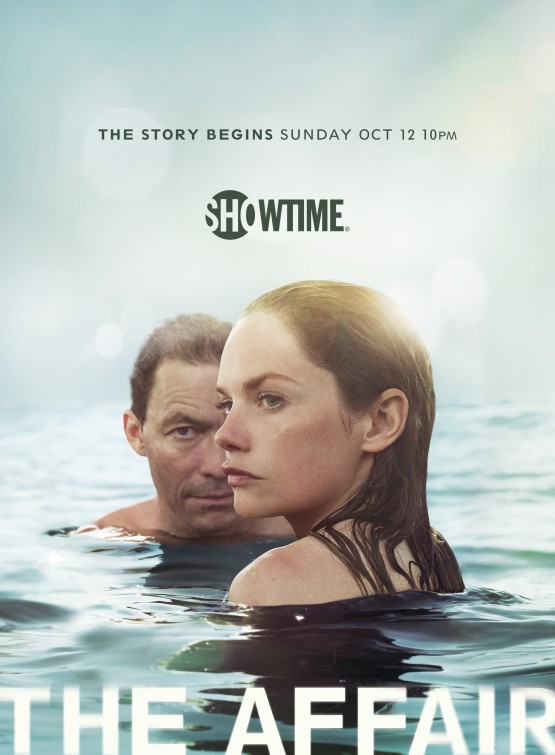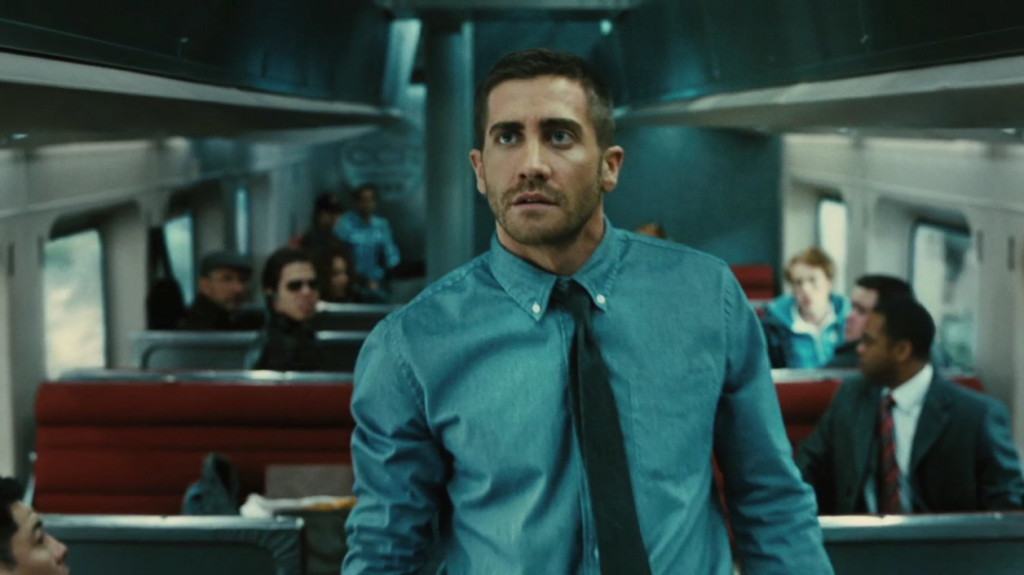Today I’d like to discuss an often overlooked aspect of screenwriting – the angle. The “angle” one tells his/her story from is often what separates the pros from the amateurs. You see, coming up with an idea is only half the battle. Once you’ve done that, you need to figure out the way you’re going to tell that idea. This is the “angle.” And it can turn a boring idea into something extraordinary.
This hit me like a bolt of lightning recently when I caught the new Showtime show, “The Affair.” Now let me ask you a question. Take a look at the poster above. Between that and the title, what are you imagining this show to be like? If you’re anything like me, you probably imagined a straight-forward soap-opera like story about a man who’s bored with marriage who engages in an affair.
And if you’re anything like me, you probably said, “That sounds boring as hell.” It’s not to say that it can’t be good. Maybe they execute the shit out of that idea and it turns out solid. But here’s how I see it. If the premise of your show/movie is something that is often the subplot of other shows/movies, it’s probably not a very strong idea.
And then I watched the show.
And I was blown away.
The genius of this show is the ANGLE. Here’s how it works. We meet a family man, Noah, with four kids and a wife he met in college. The family heads up to their beach summer home, and it’s there where Noah runs into local waitress, Alison. Alison is also married, but, as we’ll find out later, having problems in her marriage due to the loss of their child.
So far, so boring, right?
Except the first half of the show is from Noah’s point of view and the second half is from Alison’s point of view. The show had me hooked after a particular scene late in the pilot. We’d already seen this scene once from Noah’s point of view. In it, Noah comforts Alison after she’s shaken up from his daughter choking. In that scene, Noah is wearing slouchy shorts, a lazy wrinkled shirt, and he looks every bit the role of the overworked parent. In other words, his view of himself. He’s also very bumbling when he speaks to Alison, a woman he’s obviously a little attracted to. She looks sleek and perfectly put together in the scene, and she always seems to say the perfect thing.
Later, in Alison’s version of events, Noah is now wearing a buttoned up stylish shirt. He looks more tanned, more handsome. She, on the other hand, is the bumbling mess trying to get the right sentence out. Her look is pale, her teeth just a tinge less white, her hair a mess. In other words, how she sees herself. The show, then, is a brilliant study not just of two different points of view of the same events, but in how we see ourselves in this world compared to how others see us.
Yet a third element of the show is a running voice over from both characters recounting the affair to a detective. It appears that someone, at some point, was killed, and the police are looking into it. The details of this affair are helping them piece together what may have happened. This, of course, is why we’re getting both sides of the affair – because each person is telling their version.
This, my friends, is what you refer to as “angle.” An affair is boring. It has been done a billion times before. Sarah Treem found an angle, however, that made it fresh, that made it different.
The power of “angles” first struck me in my interview with Ben Ripley about his amazing screenplay, Source Code. Ben admitted to struggling with the idea, at first, of a train wreck involving time travel. He wrote a number of drafts that started after the train had crashed, with a mysterious government group coming in to use a new technology that allowed them to go back in time to figure out what happened. It was a very straight-forward version of the idea, he conceded.
It wasn’t until fooling around with the idea for awhile that he realized he needed to place the story inside the point of view of one of the passengers on the train. That was the “angle” that turned another boring sci-fi idea into one of the best screenplays of the decade.
What are some other examples of “angle” elevating a screenplay? Well, let’s say eight years ago I pitched you an idea about a group of guys who have a crazy bachelor party in Las Vegas. “It’s going to be awesome!” I claimed. “Think of all the zany wacky adventures that could happen to a group of guys partying in Vegas.” Yet the look on your face conveys one of confusion. “That sounds like the most boring straight-forward idea ever,” your eyes say.
What if I then said, “Well wait, let’s change the angle. What if instead of chronicling the night itself. What if they got so wasted they don’t remember anything from the night before. And in the process, they lost the groom! So the movie takes place the next day, as they try and piece together where they were so they can find the groom and make it back to the wedding in time.” Boom, your face lights up. “Now THAT’S a movie!” This is the same general concept, just told from a different angle.
There was no one more flummoxed by the overspending they were doing on this JJ Abrams pilot called, “Lost,” than Disney head Michael Eisner. “I don’t get it,” he would tell anyone who listened. “They crash on the island. Then what???” Eisner was quick to note that the pilot would be exciting. But wouldn’t the viewers get bored when, by episode 10, they were coming up with the 8th different way to try and find a way home?
Eisner clearly hadn’t read the series bible, which stated the unique angle the show would be explored by. Instead of some traditional, “Try to get off the island” show, each episode would be dedicated to going back in time to explore one of the passenger’s lives before the crash. These backstory reveals would then be woven into the present day island story in a way that brought the two worlds together. This was the “angle” by which Lost became one of the greatest television shows in history.
Now I don’t want to scare you. You shouldn’t try to find some amazing never-before-seen angle for your movie/show every time out. Some stories are best told in a simple straightforward manner. E.T. is a wonderful heartwarming movie. I’m not sure it would’ve benefitted by some wild angle like being told backwards or from the point of view of the alien.
Generally speaking, the more common the subject matter, the more the need for an angle. Without the jumping-around-in-the-relationship aspect of 500 Days of Summer, it’s just a straight-forward story about a couple who wasn’t right for each other.
Also keep in mind that you’re not always going to find the angle right off the bat. Sometimes you have to get into the story and write a few drafts before you realize the story could be better told another way. This is exactly what happened with Source Code. Sadly, a lot of writers will get a few drafts into a script and, even though they know it’s not working, say to themselves, “Well, I’ve already committed to this angle. I might as well play it out.” No. No no no no no no no. Why put more time into something that’s not working? Feel out the angles. Look for one that’s more exciting.
And now for some fun. Let’s see if you learned anything from today’s article. Below, I’m going to give you an idea. In the comments, I want you to pitch your ANGLE for that idea. Whoever comes up with the best angle (in my opinion), I’ll give them an AUTOMATIC BID into the SCRIPTSHADOW 250 CONTEST. Make sure to upvote the angles you like. I’m curious to see the popular consensus winner as well. Good luck!
A family boat trip goes awry when they accidently drift into the Bermuda Triangle.
Feel free to pitch either a movie or a TV show. I’ll announce the winner tomorrow on Amateur Friday. Good luck!



